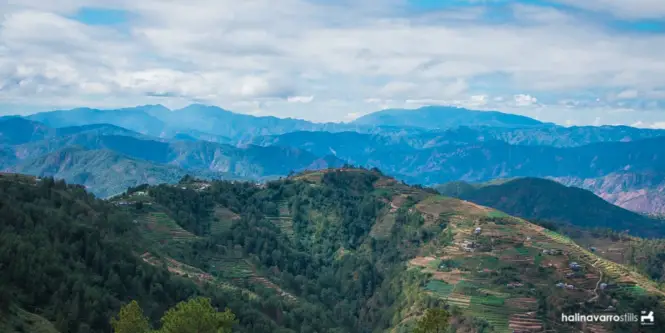
Are you traveling to the Philippines for the first time? Here’s a short Philippines travel guide that covers a little bit of everything you need to know about this archipelago in Southeast Asia, also known as the Pearl of the Orient Seas, including a few personal tips from a local — yours truly!
What you need to know
Currency
The Philippines uses Philippine peso as its currency. Currently, exchange rates are about $1 to P50. This is good news for Western tourists. However, compared to other Southeast Asian countries, you need to be more strategic in budget planning since it almost always requires local flights to transfer from one place to another.
When is the best time to visit the Philippines
As I live here, I can tell you that the weather in the Philippines is just plain crazy. That aside, December to February are the coolest months and experience few rainfalls, so it’s best to book within this period.
March to May comprises the summer months, so you’re guaranteed good weather all throughout, though you also have to deal with summer crowds and higher markups. June to November are the rainy months.
I like traveling during off-season because rates can be haggled down and there are few tourists. In fact, not only once did we explore beaches where there were literally no one else but us! But of course there’s always the risk of getting stranded due to weather disturbances.
How much does it cost to travel around the Philippines
Budget depends on where you’re going and what you’re planning to do. When we travel around the country, it typically costs us anywhere from P700 to P1500 a day (including budget accommodation, food and tours).
How to plan your stay in each province
In general, I suggest staying about 5 days in one province. But then again, it depends. For example, Siquijor and Dumaguete can be explored in a 3-day trip. Palawan has a couple of destinations that deserve at least 5 days each. So in the end it depends on where you’re going and what you plan to do.
To get a good sense of what the Philippines is like, I suggest staying in the country for 3-4 weeks at least. Here’s a sample 3-week itinerary to the Philippines, covering provinces in Luzon and Visayas.
[ Also Read: Things to know before visiting the Philippines ]
Travel tips
Plan your trip ahead and be ready to reserve/online book for accommodations and local flights in advance. Believe me, this will save you a significant amount of money in the long run and will make your trips easier.
Finding places to stay
In our experience, in non-touristy locations, we can simply walk in or do pencil reservation (we simply inform thru text or FB messaging that we will be arriving). This is especially true for small businesses. However, for mainstream tourist attractions, especially during summer, it’s better to properly book ahead to get a spot on budget accommodations such as hotels or homestays.
Booking local flights
Since the Philippines is an archipelagic country, most likely you’ll need to take local flights to go to different provinces. Direct sea or land travel isn’t always an option or may take too long. Local flights can be expensive so what we do is book months in advance (sometimes even a year early) or wait for promos. A ticket from Manila to Puerto Princesa can cost P7000 above if bought on the same day, whereas a promo ticket costs only about P200-1000.
Check for online promos from budget airlines such as Airasia or Cebu Pacific. Websites such as Traveloka also offer good rates for flights and accommodations.
Best tourist attractions in the Philippines
There are 81 provinces in the Philippines, so there’s actually a lot of places you can go to. Being an archipelago made up of 7000+ islands, this country naturally has a lot of great beaches, as well as snorkeling, diving and surfing spots. The most obvious thing you should do here is island hop!
That saying, there are also various mountains, waterfalls and lakes in the country. Provinces far from Manila have retained more of its local culture. You can see farming communities, rice terraces beside roads or on mountains, and residents living in traditional nipa huts.
So with all these options, where do you start exploring?
Main tourist attractions
Most likely, you’ll arrive in the airport of Manila, the country’s capital. From here, you can take a tour in Manila or proceed to connecting flights to other provinces. Manila has a bit of cultural sights, but because of its horrendous traffic and pollution, most people suggest — as I would — to spend the rest of your time in other provinces in the country.
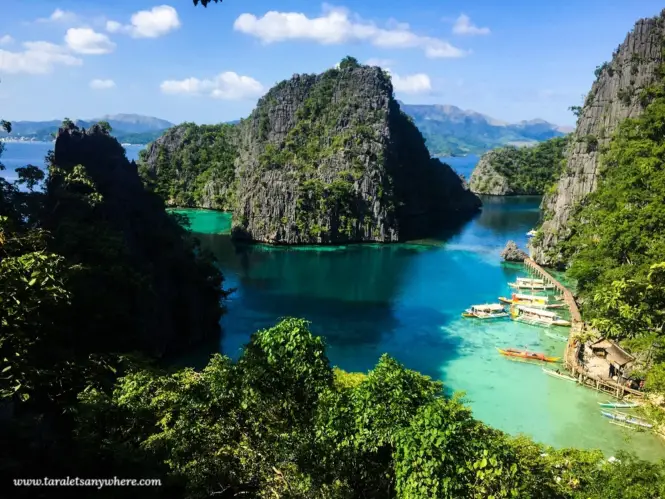
If you’re going to visit the Philippines, you shouldn’t miss Palawan (El Nido, Coron, Puerto Princesa, Port Barton and a few low-key places). It’s a must-visit for its exotic lagoons, beaches and lakes as well as limestone rock formations. If you’re on a limited schedule, I personally recommend choosing Coron over the others.
Another must-see is Siargao in Surigao del Norte, for its virgin islands and lagoons. If you want to see greens and lush islets, head over here. As of this update (2017), we’d been here twice and it still remains as splendid as our first visit. Siargao is also known as the Surfing Capital of the Philippines and is often visited by surfers from all over the world.
Also, while you’re in Siargao, don’t forget to drop by Bucas Grande and see its amazing waterway jungle.

Boracay is a world-class island. Pretty much like other famous places, Boracay is a love-it or hate-it type. Boracay has beautiful tropical beaches and is considered a party summer destination. Go here if you’re the type who are into like pub crawls and nightlife. To be fair though, it also has many watersport activities that are not easily available in other places, from snorkeling and diving to unusual ones such as mermaid swimming lessons.
Bohol is a classic tourist spot. It features the famous Chocolate Hills you always see in postcards and is home to the endemic tarsier (Carmen, Bohol). It also has some amazing quiet beaches (Panglao, Bohol).
Bohol’s nearby province Cebu is also a good choice. You can do canyoneering and visit waterfalls in Oslob, beach bum in Bantayan Island, and dive & snorkel in Malaspacua and Moalboal where you can see various wildlife such as sardine run, thresher sharks and more.
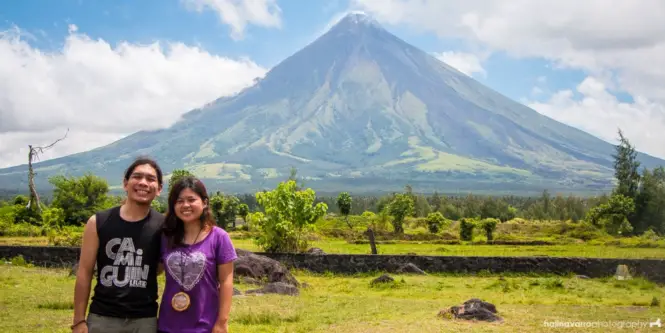
Albay in the Bicol province has the world’s perfect-shaped volcano, Mount Mayon. You can stay in a luxurious resort overlooking the mountain or do other activities such as ATV rides around the mountain.
Most foreign travelers plan their Philippine travel around these provinces, but I encourage you to also explore some off-the-beaten destinations in the Philippines. As a developing country, there’s still much more to see than listed here. (If you’d been a long-time reader of our blog, you’ll know that we mostly blog about off-beat destinations in the country! So go ahead and explore.)
Off-the-beaten destinations
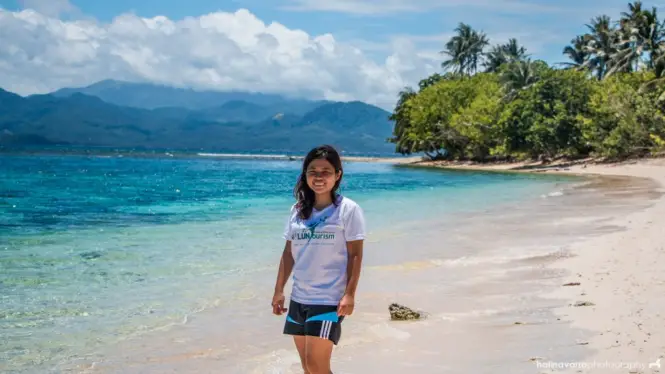
Here’s a secret: there’s a lot of off-beat locations in the Philippines… but at the same time, local tourism is also growing that it may look very different a few years from now. The challenge is to know where to look and having the resources and effort to actually get there.
That aside, here are some of our recommendations for locations that are less touristy, but with at least basic infrastructure for travelers.
My favorites are Sorsogon and Catanduanes. I am especially endeared with the first, and here you’ll find a lot of activities including exploring pinkish-sand beaches and a marine sanctuary, kayaking in the lake of Mount Bulusan, surfing in Gubat and many others.
Siquijor and Negros Oriental are other good options for some quiet, quality time. I know that a lot of foreign tourists like Siquijor because of its many waterfalls and general quiet tourist scene.
Aside from these, Camiguin in the south also has wonderful features — hot springs, falls and islands. It’s visited less and again seems to be a favorite of laid-back foreign travelers.
There are also areas in Palawan that are, as of this writing, undeveloped and visited less. There’s Linapacan Island (dubbed as having the world’s clearest waters by a website), Balabac islands in the southern tip of the island province and Port Barton.
Our personal suggestions
As for my personal recommendations, it would be Palawan (Coron in particular shouldn’t be missed), Sorsogon, Catanduanes, Surigao del Norte (specifically Siargao and Bucas Grande) and Negros Oriental (specifically Apo Island). If you like adventure, you should definitely include Cebu in your visit.
I’m also endeared to Dinagat Islands, with its raw islands that might be comparable, if not better, than those in Palawan.
Unique sights and cultural experiences

Here’s a short list of places with some unique culturally experiences or sights you can find in the Philippines. This is especially helpful if you’re the type who wants more than island hopping.
- See the rice terraces in Banaue or, even better, Batad; Maligcong also has majestic rice terraces
- Meet the oldest mambabatok and have a traditional tribal tattoo in Kalinga
- Enjoy a kawa hot bath in Tibiao, Antique
- Visit historic churches in Bohol
- Immerse in the T’boli community residing in Lake Holon, South Cotabato
- See the old stone houses and preserved culture of the Ivatan tribe in Batanes
For another resource on what to do and where to go, read this article by Guide to the Philippines.
What Filipino foods to try
Filipino food isn’t the most popular in Southeast Asia, but we do have remarkable dishes as well.
Some must-try’s include sinigang (soup with sampaloc or other sour fruit), sisig (grilled pork face), kare-kare (stew with peanut sauce), dinuguan (soup with pig’s blood), kilawin (fresh fish marinated in vinegar) and laing (gabi leaves in coconut milk).
For desserts, halo-halo is a must try.
For the street food, try kwek-kwek, various inihaw (grilled food such as chicken intenstine) or the infamous balut (boiled duck embryo). Here’s a sample video of Filipino street food found in Cebu.
[ Also Read: Must-try foods in the Philippines ]
Each province has its own specialties as well, so don’t forget to ask locals for recommendations.
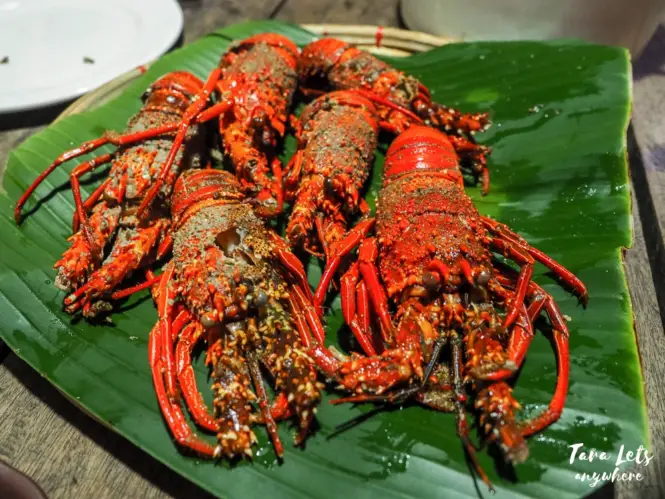
Whether you’re a fan of any of these or not, here’s one thing you need to try: buying seafood! This is one of the things I personally love about going to provinces out of Manila. Crabs, shrimps, squid and fishes are cheap in seaside communities. You can buy fresh catch from fishermen themselves early in the morning or in the market. For instance, lobsters can go as cheap as P50 each ($1) and scallops for P1 each ($0.05).
If you’re staying in the city though, you can still feast on seafood by going to seafood dampa.
Hi there! I’m Katherine Cortes. I’m a writer, editor and software engineer. Along with my boyfriend Hali, I like traveling to off-beaten locations, beaches, beaches and beaches and having nice staycations where I can read and daydream.
Welcome to my blog, Tara Lets Anywhere! Tara lets is how you say “let’s go” in Filipino.